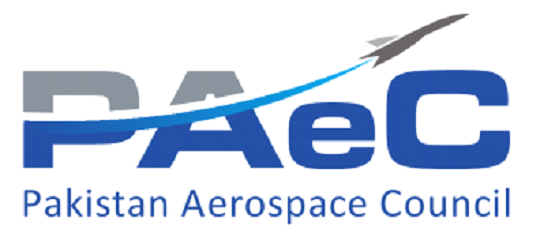Start-ups Take to the Sky
The Aircraft Industry is Rife with Opportunities for Start-ups
In recent years, the aviation and space industries have become extremely attractive to start-ups and small businesses. The boom of start-ups in the aerospace industry began in 2010 with new initiatives from Elon Musk (SpaceX), Jeff Bezos (Blue Origin) and Bertrand Piccard (Solar Impulse) – all of them are successful entrepreneurs.
With a gleam in their eyes, they started to argue that smaller companies can take to the skies on par with huge corporations. And they were right: today, the aircraft industry is rife with opportunities for start-ups. New players not only offer innovative solutions, but can also radically change the nature of the entire market. Now, the industry is flooded with new players. According to recent research conducted by NewSpace Global, the number of start-ups in the industry has grown almost tenfold since 2013 – from 120 to over 1,000 today. In tandem, in 2018 alone, £25.6 billion was invested in aerospace start-ups, according to the British venture fund Seraphim capital.
However, the aerospace industry has not evolved in the past 25 years. This tightly regulated and safety critical industry has been risk-adverse when it comes to adopting new technology. Arguably, this is leaving the door wide open for start-ups. Unlike the state-owned companies or large international corporations, start-ups use their “no fear of failure” approach. They strive to reduce the final cost of their products and services to make them accessible to a wide range of customers. To do this, they have to work faster, generate more new ideas and use a number of cross-sectoral, technologies and solutions. For example, it took SpaceX five years and £307 million of investments in order to develop the carrier rocket Falcon 9, while NASA would have spent about £1bn for a similar task, according to the agency’s own calculations.
Over the past few decades, the quality of technologies and various components has improved while their manufacturing costs have dropped. As a result, start-ups are now present in almost every segment of the aerospace industry. The fastest growing trends in the industry are unmanned aerial vehicles, satellites, space communication systems, various services for maintaining space and aviation infrastructure, and finally, suborbital tourism.
For example, Chinese start-ups Space Transportation and Linkspace have recently launched their reusable rockets – an affordable alternative to Falcon 9. In the UK, OneWeb is already launching miniature satellites into the low Earth orbit. By 2021, the company intends to use it to provide high-speed Internet access throughout the world. Orbex, is preparing the commercial release of its Prime rocket, which is specifically designed to launch ultralight satellites.
By 2023, it should put into orbit the nanosatellites of Swiss start-up Astrocast, which plans to deploy a global support network for the Internet of things. Elsewhere, the Canadian company LEO will launch a service that monitors the chemical composition of the earth’s surface and track space debris by 2021.
Agility within Start-ups
The list of start-ups doing innovative work within the industry could go on. Each example highlights that start-ups are moving from just talking about projects to action them, and at a rapid pace. Start-ups are not afraid to experiment, and as a result, new types of transport, new markets, and new categories of consumers are born right in front of our eyes.
Currently, Dassault Systèmes is working with AeroMobil, who are creating a prototype of a roadable aircraft, the first vehicle of its kind due to be released in 2020. It will be possible to move around in any terrain and in any weather. As they say in the company itself, developing such a project required a multitude of cross-sectoral interaction. After all, in order to successfully pass certification, such a flight-and-ground apparatus should meet the requirements of regulators of both industries at once. But the emergence of this type of transportation will give impetus to the development of new related types of business – schools for drivers/pilots and even flight-car service.
So, how do start-ups manage to compete on equal terms with big companies? They have the same engineering and marketing tools as market leaders. In fact, they use all the benefits of cloud computing, computer vision, Big Data, as well as business intelligence and digital IT platforms.
Furthermore, start-ups win in terms of flexibility and mobility, the use of agile principles in product development, and the ability to find and occupy new niches in the market. This gives them a great advantage over large companies.
What’s next?
Of course, market leaders won’t be quick to give up their positions to new players. They also want to take advantage of the innovations start-ups are launching. To achieve that, they are creating infrastructure to grow such companies in-house; they acquire the teams and technologies from the market and set up corporate venture funds and partnerships to support their projects. Tighter collaboration between large and emerging players will bring more innovation to the market and help it transform further.
Although start-ups embrace new ideas and technology, they often face a much bigger threat than large players: they cannot afford to fail in this highly regulated industry. They need to pass long and complex certification processes before launching their product despite being both cash-strapped and time-constrained.
Online, cloud-based virtualisation platforms offer new ways for ideation, design, manufacturing, testing, certification and operation, helping start-ups optimise their processes and keep their activity focused on their products. These platforms automate routine operations, reducing time spent on administrative tasks and freeing up space for strategic sharing of information. As a result, start-ups can accelerate their programmes and be the first to bring their prototypes to market. Investments in digitalisation can pay off in as little as 6-18 months, fast-tracking the start-up’s journey to profit. Providing these young companies with the resources to centralise all their operations helps start-ups focus on what they do best: coming up with creative ideas to complex issues and challenging the big players. This creates a much more vibrant industry that pushes the boundaries of the atmosphere.



